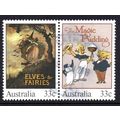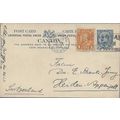Cookham, Berkshire - postcard c.1905
- Condition : Used
- Dispatch : 2 Days
- Brand : None
- ID# : 122803365
- Quantity : 1 item
- Views : 1828
- Location : United Kingdom

- Seller : justthebook (+1703)
- Barcode : None
- Start : Wed 04 Dec 2013 10:55:51 (BST)
- Close : Run Until Sold
- Remain : Run Until Sold
More Listings from This Seller view all
Seller's Description
- Postcard
- Picture / Image: Cookham, Berkshire
- Publisher: none given
- Postally used: no
- Stamp: n/a
- Postmark(s): n/a
- Sent to: n/a
- Notes / condition:
Please ask if you need any other information and I will do the best I can to answer.
Image may be low res for illustrative purposes - if you need a higher definition image then please contact me and I may be able to send one.
------------------------------------------------
Postage & Packing:
UK (incl. IOM, CI & BFPO): 99p
Europe: £1.60
Rest of world (inc. USA etc): £2.75
No additional charges for more than one postcard. You can buy as many postcards from me as you like and you will just pay the fee above once. (If buying postcards with other things such as books, please contact or wait for invoice before paying).
Payment Methods:
UK - PayPal, Cheque (from UK bank) or postal order
Outside UK: PayPal ONLY (unless otherwise stated) please. NO non-UK currency checks or money orders (sorry).
NOTE: All postcards are sent in brand new stiffened envelopes which I have bought for the task. These are specially made to protect postcards and you may be able to re-use them. In addition there are other costs to sending so the above charge is not just for the stamp!
I will give a full refund if you are not fully satisfied with the postcard.
----------------------------------------------
Text from the free encyclopedia WIKIPEDIA may appear below to give a little background information (internal links may not work) :
*************
Cookham is a village and civil parish in the north-easternmost corner of Berkshire in England, on the River Thames, notable as the home of the artist Stanley Spencer. It is 2 miles (3 km) north of Maidenhead close to the boundary with Buckinghamshire and forms part of the High Wycombe Urban Area. It has a population of 5,519.[1] In 2011 The Daily Telegraph deemed Cookham Britain's second richest village.[2]
The parish includes three villages:
- Cookham Village – the centre of the original village, with a High Street that has changed little in appearance over the centuries.
- Cookham Dean – the most rural village in the parish.
- Cookham Rise – the area in the middle that grew up around the railway station.
The village's neighbours are Maidenhead to the south, Bourne End to the north, Marlow and Bisham to the west and Taplow to the east.
The River Thames flows past Cookham on its way from Marlow to Taplow, and forms the boundary with Buckinghamshire. Several islands in the Thames belong to Cookham, such as Odney Island, Formosa Island and Sashes Island which separates Cookham Lock from Hedsor Water. The Lulle Brook and the White Brook are tributaries of the River Thames which flow through the parish.
A good amount of common land remains in the parish, such as Widbrook Common, Cookham Dean Common and Cock Marsh. Winter Hill affords excellent views over the Thames Valley.
Cookham is also home to the Chartered Institute of Marketing, based in Moor Hall. The John Lewis Partnership, one of the country's premier retailers, which runs John Lewis department stores and Waitrose supermarkets, has a residential training and holiday centre based at Odney.
The area has been inhabited for thousands of years. There were several prehistoric burial mounds on Cock Marsh which were excavated in the 19th century and the largest stone axe ever found in Britain was one of 10,000 that has been dug up in nearby Furze Platt. The Roman Road called the Camlet Way is reckoned to have crossed the Thames at Sashes Island, now cut by Cookham Lock, on its way from St. Albans to Silchester. By the 8th century there was an Anglo-Saxon abbey in Cookham and one of the later abbesses was Cynethryth, widow of King Offa of Mercia. It became the centre of a power struggle between Mercia and Wessex. Later King Alfred made Sashes Island one of his burhs to help defend against Viking invaders. There was a royal palace here[3] where the Witan met in 997.
It is recorded in the Domesday Book as Cocheham. The name may be from the Old English coc + ham, meaning 'cook village', i.e. 'village noted for its cooks', although the first element may be derived from the Old English coc(e) meaning 'hill'.[4]
Although the earliest stone church building may date from 750, the earliest identifiable part of the current Holy Trinity parish church is the Lady Chapel, which was built in the late 12th century on the site of the cell of a female anchorite who lived next to the church and was paid a halfpenny a day by Henry II.[5]
In the Middle Ages, most of Cookham was owned by Cirencester Abbey and the timber-framed 'Churchgate House' was apparently the Abbot's residence when in town. The ""Tarry Stone"" – still to be seen on the boundary wall of the Dower House – marked the extent of their lands.
In 1611 the estate at Cookham was the subject of the first ever Country house poem, in Aemilia Lanyer's ""Description of Cookham"". In the poem Lanyer pays tribute to her patroness, Margaret Clifford, Countess of Cumberland, through a description of her residence as a paradise for literary women. The estate at Cookham did not actually belong to Margaret Clifford, but was rented for her by her brother while Clifford was undergoing a dispute with her husband.
The town people have resisted many attempts to enclose parts of the common land, including by the vicar, Rev. Thomas Whateley in 1799, Miss Isabella Fleming in 1869 (who wanted to stop nude bathing at Odney) and the Odney Estates in 1928 who wanted to enclose Odney Common.[6] The Maidenhead and Cookham Commons Preservation Committee was formed and raised £2,738 to buy the manorial rights and the commons which were then donated to the National Trust by 1937. These included Widbrook, Cockmarsh, Winter Hill, Cookham Dean Commons, Pinkneys Green Common and Maidenhead Thicket.[7]
type=printed postcards
theme=topographical: british
sub-theme=england
county/ country=berkshire
number of items=single
period=pre - 1914
postage condition=unposted
Listing Information
| Listing Type | Gallery Listing |
| Listing ID# | 122803365 |
| Start Time | Wed 04 Dec 2013 10:55:51 (BST) |
| Close Time | Run Until Sold |
| Starting Bid | Fixed Price (no bidding) |
| Item Condition | Used |
| Bids | 0 |
| Views | 1828 |
| Dispatch Time | 2 Days |
| Quantity | 1 |
| Location | United Kingdom |
| Auto Extend | No |



 for 1 item(s)
for 1 item(s)
















